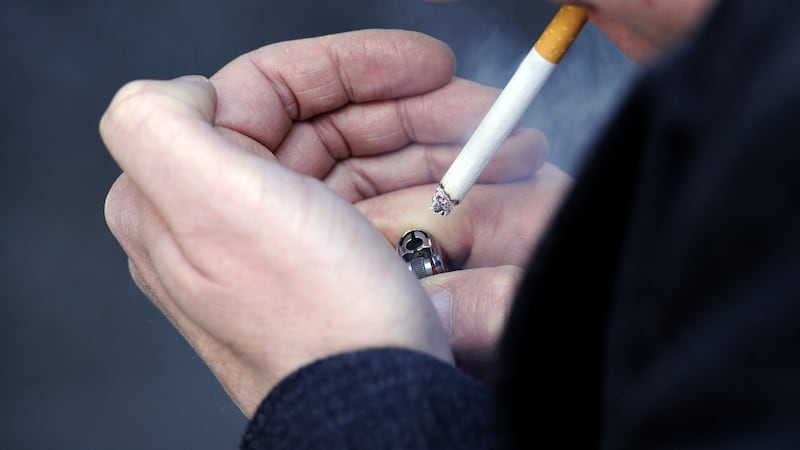The Irish government are displaying a new version of the poppy called the ‘shamrock-poppy.’ The new emblem looks contrived and belittles the poppy which can be half the size of the shamrock on some pins. It does compete somewhat with the powerful symbolism of the poppy on its own and there is simply no need for it as such. Shamrocks were not known to have grown in the fresh war-torn earth in Flanders, so its symbolism seems to be for political purposes only. The Irish see the poppy as a powerful British symbol, elevated by the BBC significantly, which of course engenders the usual British/Irish rivalry. Of course the whole idea of the poppy is solidarity, but there must now be a new version. The Irish government have been placing poppy-bare wreaths on British memorials. Its symbolism displays an ignorance and separatism – if an not insult in doing so. Poppy wreaths are everywhere in Enniskillen at remembrance time, except the Irish green poppy-less wreath of the past. So, they have come up with the next best thing in lieu of it. The Irish version of the poppy could soon be on its way to many memorials in Northern Ireland, instead of the dull, bare, sterile, green, Irish laurel wreath which seems always be out of place at such memorials. Some might see it as a positive step forward in building bridges. Fair enough. However, it is after taking more than 100 years for the international memorial symbol of the poppy to appear on any Irish politician’s lapel and in a derisory form – which shows us how far there is to go.
There is even division about where the Enniskillen memorial will go, lest we forget the politics still being played out over violence and so-called political violence and who should be named as responsible. Enniskillen was not blameless and was a deliberate act, yet how and where it is to be remembered is already causing division. All the poppies and poppy-shamrocks in the world do not seem to be able to heal and ironically have created more conflict. Division, division, division, it is the same old story. Two peoples, two languages, two Churches, two poppies, two of everything between Britain and Ireland and one of nothing.
The big question is will all the poppies and shamrocks in the world change the sectarian nature of our divided society and will lessons be learnt from all the wars and murderous paramilitary atrocities? We will have to wait and see, but be mindful that history can repeat itself when poppies and shamrock-poppies may forgotten about and the madness, suffering, and grief, begin all over again.
The poppy and shamrock-poppy will only be symbolic and relevant if there is no return to the past, otherwise they mean nothing at all and will reek of apology and double standards.
MAURICE FITGERALD
Shanbally, Co Cork
Eulogy to victims of war conjures up false image
There is much debate recently about the significance of the poppy in Ireland. There are those who argue that it is a unifying symbol because people of both loyalist and nationalist traditions fought together in the First World War. Remembrance services took place at the weekend to mark their sacrifice and those of later British conflicts. The theme was the debt owed to them for their allegiance to Britain.
The fact that half of them were conscripts and many more joined before they were conscripted will be ignored as will the fact that the reasons for it among the great powers of the time were largely oblivious to the canon fodder that were misused whose principal aim at the time was just to keep body and soul together. This annual eulogy to the sacrifice they made conjures this false image of popular mobilisation in an enthusiastic demonstration of allegiance to a British Empire when really there was virtually no choice.
That may have been true in the very early stages of the war when almost a third of recruits came from boys who were below recruitment age but that recruiters turned a blind eye to.
I would say certainly to those who had relatives who fought in that war to remember them but don’t see them as people who made a conscious choice to fight for some noble cause, because that cause did not exist, but rather as poor victims who were shamefully abused by a monarchy and aristocracy that placed no value on their lives.
SEAN O FIACH
Belfast BT11
Wearing of symbols
I have nothing but respect for the poppy and those who chose to wear it. Last year I wore a white poppy as a mark of respect to the dead of both great world wars but as a silent protest at the industrial and pointless slaughter of the First World War, including my great Uncle Francis O’Boyle killed in action July 12 1916.
This coming year I will wear an Easter Lily to remember all those who gave their precious lives in the honourable cause of Irish independence and unity.
Is this decade of important centenaries is it not time for employers to recognise the multi-layered history of this island and allow employees to wear either/or both the poppy and the Easter Lily.
Next month SF will be bringing a motion before Belfast City Council calling upon the council to introduce a new policy of allowing our staff to wear either a poppy and or an Easter Lily or both.
We are also calling upon the Equality Commission to carry out a review of its guidance in respect of the wearing of symbols in the work place to allow employees to wear not just the poppy but also the Easter Lily, should they chose to do so.
In this important decade of centenaries it is equally important that the Equality Commission and employers develop and implement a policy that promotes mutual respect, understanding and tolerance, not cultural dominance and exclusivity.
Cllr JIM McVEIGH
Sinn Fein, Belfast City Hall
Credit where it is due
Those who rush to judgment on the wearing of the poppy in the Dáil should, perhaps, accord our new taoiseach a little more credit. Given his background Mr Varadkar may have a more universal grasp of history than most of us.
The taoiseach’s innovatively- designed ‘poppy’ features what appears to be a neat bullet-hole through the shamrock. While remembering WW1, could his badge also be intended to commemorate the massacres committed by British soldiers in Ireland, including the two ‘Bloody Sundays’?
The 1972 one was described in India at the time as ‘Ireland’s Amritsar’. And our taoiseach dutifully rounds off his design with the sobering legend ‘Lest we forget’.
BILLY FITZPATRICK
Terenure, Dublin 6
Sights set on Dark Ages
It was reported recently in an English newspaper that the pilot of an incoming flight to Belfast airport announced: ‘We will be landing soon, put your watches back 300 years.’
A joke maybe but a typical reflection on the mindset that abounds about the north of Ireland.
A mindset cultivated by two so-called political parties the DUP and Sinn Féin hibernating in Stormont.
As the RHI fiasco rears its head in the form of an investigation, we still await Arlene Foster’s admission that had she listened to Martin McGuinness’s reasonable request for her to step down temporarily pending an inquiry, we would not be saddled with two political parties not speaking but whose aspirations are not to take us back 300 years but have their sights set on the Dark Ages.
WILSON BURGESS
Derry City







